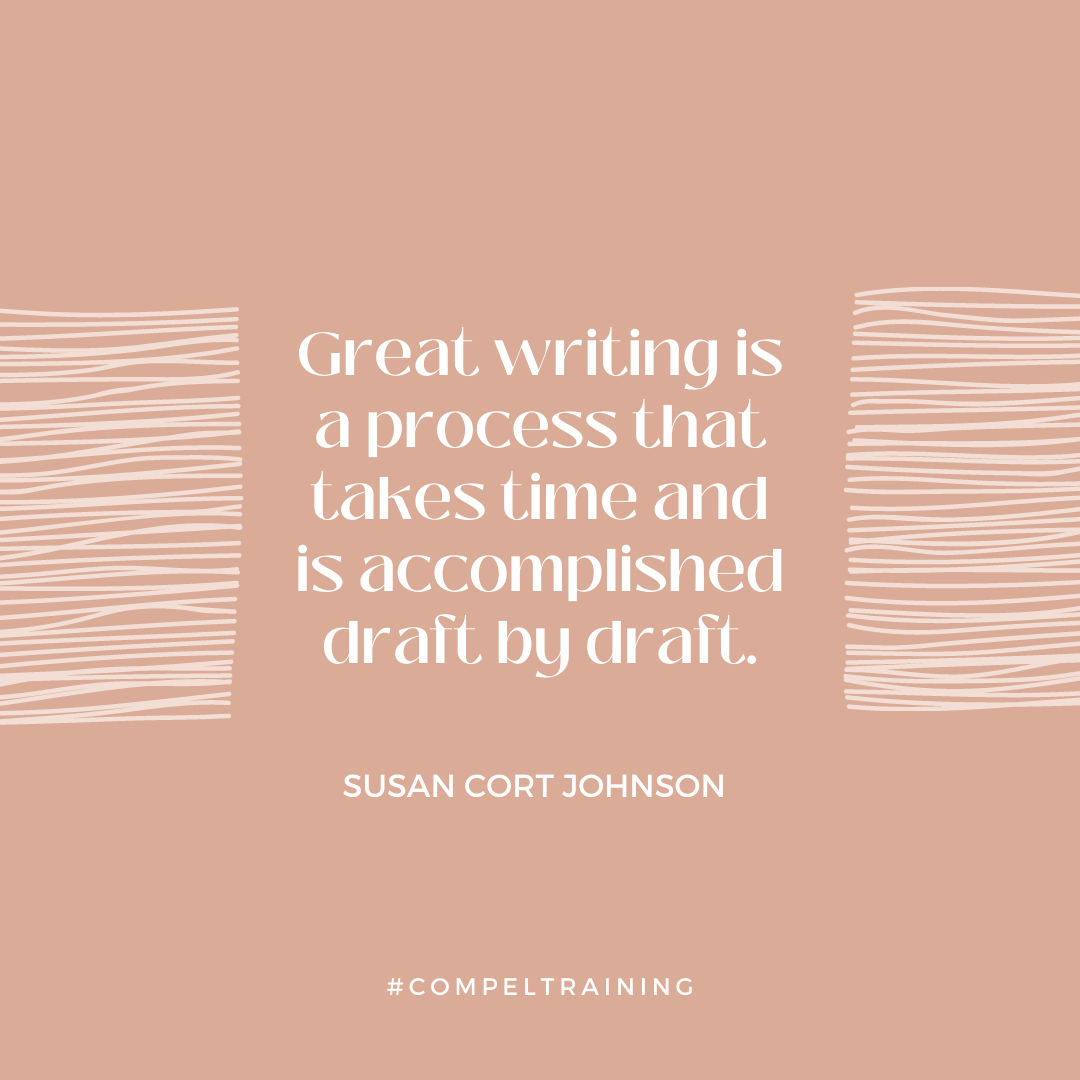A Disciplined Draft-by-Draft Process

A quote pinned to the bulletin board in front of my desk reminds me that writing is a process.
“Putting it on paper lets you start fixing it.” —Emma Coats
First, I put it on paper. This step initiates the discipline required to write an intriguing article, essay, devotion or book chapter. My tendency is to be a hybrid writer/editor while crafting the first draft, which can stifle creativity. Writers write, so this is the process for the first draft. If you are like me, it will take discipline not to keep returning to the beginning and reading through the paragraphs, polishing the manuscript as you write. Yet when I fail to remain the writer, the momentum is lost as I start, stop, start, stop.
I became aware of this bad habit during a Direct Access Book Club course on writing a Bible study. One of the instructors, Sally Sharpe, offered this advice: “When you have the writer’s hat on, do not put on the editing hat. They are two separate functions. When you are writing, you are writing; you are not correcting or revising.”
Once the words, sentences and paragraphs are on paper, and the manuscript is complete, I become the editor. In the past I would edit by reading the manuscript several times, looking for mistakes, such as grammatical errors, awkward sentences or rough transitions between paragraphs, at random. But now I edit with a singular purpose during each review, reading the manuscript with an eye for passive versus active verbs, wordiness or use of qualifiers, for example.
My editing techniques improved by applying the information provided in COMPEL courses. A self-editing checklist with suggestions on what to look for during a first, second and third reading was provided in the course “Becoming a Better Writer by Becoming a Better Self-Editor.” Yet by the time I took this course I had already created two binders for editing. One has information on grammar and the second on creative writing techniques, such as “hooks” and titles. I use these binders to methodically work through the manuscript. Once the checklist is completed, the editing process ends.
During the writing process I try to have a clear concept of the point I am trying to make in the pages of my manuscript. Anything that does not support or clarify the point must be removed. Asking others to read the piece and explain the message helps, for you learn whether you got the point across. If not, the manuscript must be reworked, torn apart and put back together.
This is difficult. As writers we can become attached to our words, so possessive of a beautifully crafted sentence that we can’t pull it even though it does not move the reader forward but instead slows the reader’s progression like a speed bump on a roadway. These masterful sentences that don’t fit can be saved in a writer’s notebook.
Once, I had the notion that great authors like Ernest Hemingway wrote manuscripts at a rapid speed. The words were hammered onto the page with the aid of a typewriter, fingers pumping. Each time they struck a key, the metal letter arm would rise, imprinting the words onto paper in a flurry of clicks and clacks like the castanets of a flamenco dancer. Then I read that Hemingway rewrote a section of A Farewell to Arms 39 times before he got it right.
This confirmed great writing is a process that takes time and is accomplished draft by draft.
By Susan Cort Johnson
Recommended Posts

Ever wanted to write for Proverbs 31 Ministries? Here’s how…
April 18, 2024

When Writing Feels Like a Nightmare
April 16, 2024

How To Write a Strong Introduction
April 9, 2024

Yes editing is a process and often takes longer than writing. In grad school a teacher asked us how many times we should edit a piece. We knew more than once at this stage in school. A few numbers were tentatively thrown out. Four. Six. Three. The teacher said that the author we were reading edited her work about 50-70 times. Well that shocked us to silence. Then she said would be happy if we did it six times to 12 times.